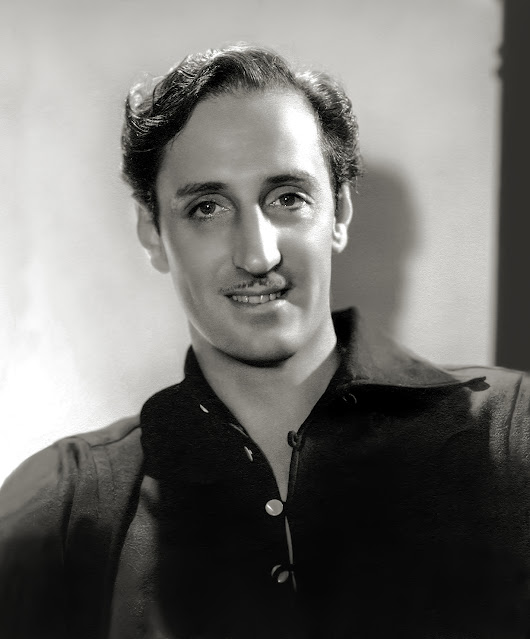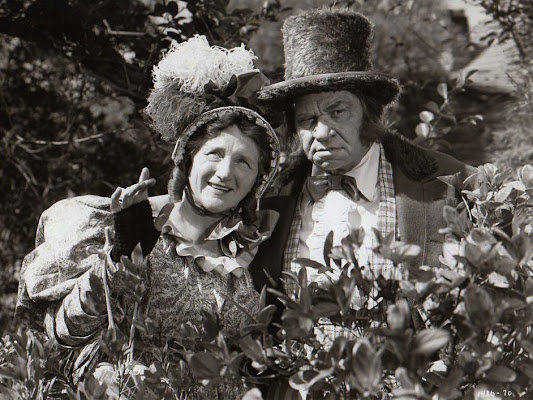Supreme Artist of Glamour Photography
Hurrell's Hollywood as Revealed by Mark Vieira
Permit Greenbriar to sing unabashed praise for Mark A. Vieira’s latest book, a reprint, with much new content, the image rich Hurrell’s Hollywood, all of what was great from the 2013 edition plus more the author obtained since and put to his own, and remarkable, process of restoration and enhancement. Technology can do miracles with vintage photography, but only where the user comes equipped with knowledge of fresh resources plus technique applied generations ago by George Hurrell. In less capable hands, effort to “improve” upon classic photography will but distort beauty of subjects captured by Hurrell when glamour was the goal and images were precision designed to achieve ends. Mark Vieira understands these subtleties as result of fifty years he has spent celebrating subjects, their character, personalities, “You’re able to photograph thought” as one star sitter told him. Vieira studied Hurrell and mastered his approach, in addition to establishing his own. He describes the artist’s rise, fall, and rise again while acknowledging Hurrell as often his own worst enemy. The book explores the nether world of collectors who chased both an aging Hurrell and survivor images spread thin over Hollywood memorabilia shops and “lavender-scented” lairs of oft-ruthless sorts who would do anything, just anything, to secure treasures they valued over all else. Mark Vieira explores the psychology of obsession as it applies to classic Hollywood and gods it manufactured. “Get a life,” we might say of single-minded hunter/gatherers, and no one reveals that subculture so vividly as Vieira does here.
Hurrell could be temperamental as stars he shot. Dancing and prancing round the camera to put life into sometime dull subjects, this artist could, like a painter (Hurrell’s early ambition), be frustrated by result had. Silk purse from sow ears was his known specialty, players plain as milk emerging transformed from sessions with Hurrell. Smart ones recognized the magic, courted Hurrell, wanted him and no other to capture them, Norma Shearer in such category, and not alone in her insistence that he photograph her. Then of course there were those Hurrell rubbed wrong ways, Garbo for instance, or Olivia De Havilland. Latter sort of froze before his lens, would not do “sexy” as he liked, and insisted upon, with distaff subjects. Hurrell understood well what “glamour” was really about, film star portraiture in some ways like calendar art with richer patina. Mindful of this, Hurrell let it rip where immortalizing beauty. His way was plainly unique, and bosses saw benefit of keeping him close. Hurrell would not suffer fools nor interference, once telling Louis Mayer to go to hell. So here was classic case of a man too valuable not to tolerate while he’s hot but come dawn upon decline and … here’s your hat, George. Hurrell humbled, though no less cocksure, took work he could find, alas beneath him, rushing about sets for bad 60/70’s movies grabbing “stills” with compact modern cameras. He might have quit but for half a dozen offspring sired over several marriages. There was an 80-90’s comeback, Hurrell trendy all of a sudden and money pouring back in, restless nature having forgot worth of work he’d done in Golden Times, not saving negatives and having precious few prints, so what to do when galleries called for stuff they could hang, George with so little to supply?
 |
| Mark Vieira Learning from the Master, George Hurrell |
Here was when collectors suddenly mattered. They would be recognized, courted, chased, for suddenly valuable relics they and no one else possessed. Mark Vieira knew these people and watched them scramble for what survived of Hurrell’s art. Vieira tell of how Hurrell legacy rose anew against backdrop of decaying Hollywood and its under-dwelling pack rats is reality check of first order. The author dissects twisted process that placed George Hurrell finally among great photographers of the twentieth century, status enhanced the more by progress Vieira has made toward restoring portraiture that was for years ignored or endangered. Too complex a process for laymen to readily comprehend, I asked the author to describe just how he works magic upon images to make them shine as never before. What follows is Mark Vieira’s own account of how he does it:
THOUGHTS ON PRINTING CLASSIC HOLLYWOOD PHOTOGRAPHY
If this were a perfect world, I would snap my fingers and instantly have access to 8x10 nitrate camera negatives made in 1934 on the set of Josef von Sternberg’s visual masterpiece, The Scarlet Empress. These are extraordinary images, worthy of fine-art printing. But we live in an imperfect world, and in 1949, Paramount Pictures, the onetime owner of those camera negatives, decided that they were taking up space.
The negatives were thrown out, except for a few dozen that survived to find dubious use in the Universal TV Department. (Universal bought the pre-1948 Paramount film library in 1957 for TV syndication.) At other studios, many negatives survived these purges, only to succumb to Vinegar Syndrome, where latent gases cause negatives to wrinkle and crack.
Only once were any of the Paramount
negatives printed to reveal the full glory of their lighting, composition, and
tonalities. This was in 1999, when I secured permission from Universal to make
fine-art darkroom prints for an exhibition publicizing my book Sin in Soft
Focus. Not long afterward, Universal turned its Paramount negatives over to
the Motion Picture Academy for proper nitrate storage.
In the mid-2000s, digital technology spelled the end of film-and-darkroom photography. I’d been working as a photographer since 1969 and was threatened by what was happening. I didn’t like what I’d seen of digital photography. I thought digital printing looked flat and lifeless. I held on to my darkroom work, even as orders dwindled and Hollywood negatives held by collectors were sold to investors who refused to let me print the negatives.
Flash forward to 2019: I’d learned to scan vintage black-and-white photographs because publishers would no longer accept boxes of photographs for the purpose of illustrating a book; I had to send high-resolution scans. In addition to scanning, I’d learned how to improve the images. This process became my stock in trade.
The first step is to “clean” the image, removing white dust spots, scratches, and cracks. There are Dust Removal tools in Photoshop, but often this process must be done one spot at a time, using either the Clone Tool or the Spot Healing Tool.
Once the image is free of ugly
“artifacts,” the next step is to adjust brightness and contrast, because few
images have ideal printing histories. If there is one area of the image that is
too bright, I “burn” it; if it’s too dark, I “dodge” it.
The next step requires subjective judgment, because there comes a point where an image can be brought to life by adjustments in highlight and shadow detail. If done correctly, this gives the photograph a lifelike, three-dimensional look. The newly added Camera Raw Filter allows for much more dimensionality.
Lastly, I use the Colorize Tool to give the image a slightly warm tone, but only a bit, because too much looks silly, or worse, faded, which is how many of the old pictures look when I start to work on them.
In 2019 there occurred a turning point in my photographic career. Eric Joseph of Freestyle Photographic in Hollywood led me to the Canon Pro Graf Pro 1000 inkjet printer. I had remained skeptical of digital printing, doubting that it could ever match the quality I’d achieved in the darkroom with an 8x10 enlarger. After I bought the Canon printer, I made tests. I scanned vintage negatives. I scanned vintage prints. I scanned darkroom prints I’d made from these vintage negatives. I wanted to see if I could get the Canon printer to produce prints as fine as my darkroom prints.
The side-by-side comparisons were startling. In most cases, the Canon prints looked as good as the darkroom prints. About twenty percent of them looked better, with a wider tonal scale, improving both shadow and highlight detail. With certain Canson matte papers, I was able to find effects that I could never have found in traditional papers. This was unexpected; I’d hoped to match, not surpass.
I’m happy, and my clients are happy, because they can purchase large fine-art prints of favorite images—for which it would be impossible to find original negatives. Before digital, the accepted practice was to shoot a copy negative (see the picture of me in 1975). The quality I got from copy negatives varied widely. Even the prints that looked good didn’t look like a print struck from a vintage camera negative. Ironically, I’ve been able to scan and upgrade old copy negatives and copy prints, in most cases so successfully that the Canon prints I make from the new scans look like originals.
This is the most important element of the digital story—how much improvement is possible with a discerning application of Photoshop. These Before-and-After pictures should give you an idea of what’s possible. What’s rewarding is sharing an image you never thought you’d get, and seeing details you couldn’t see in a small, damaged, faded print. The photographers who made these images were artists, so what I’m doing is art restoration—and I’m teaching art history.
Much further info, and imagery, at Mark Vieira's Starlight Studio site. Visit also his Facebook page for daily updates.



































